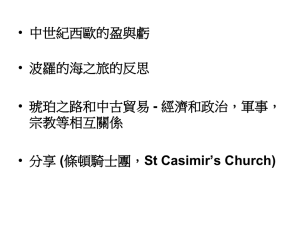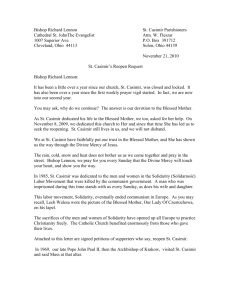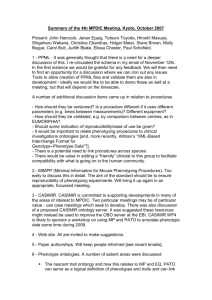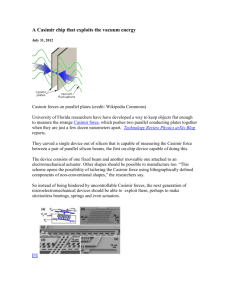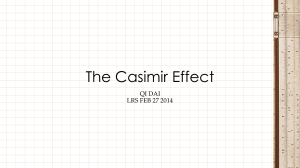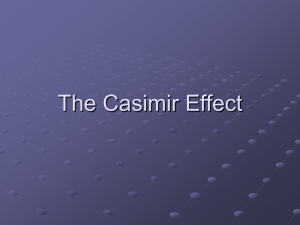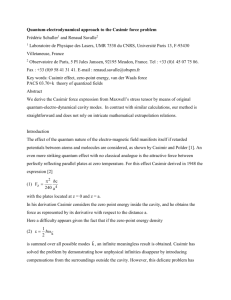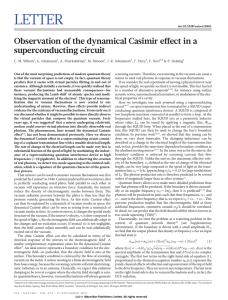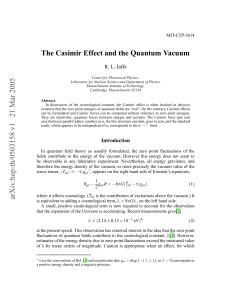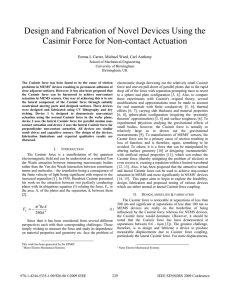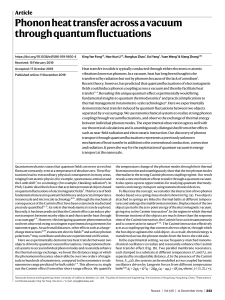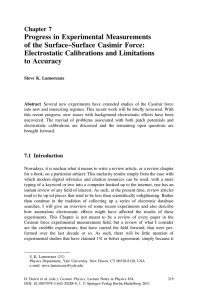Critical Casimir forces at the Anderson transition
advertisement
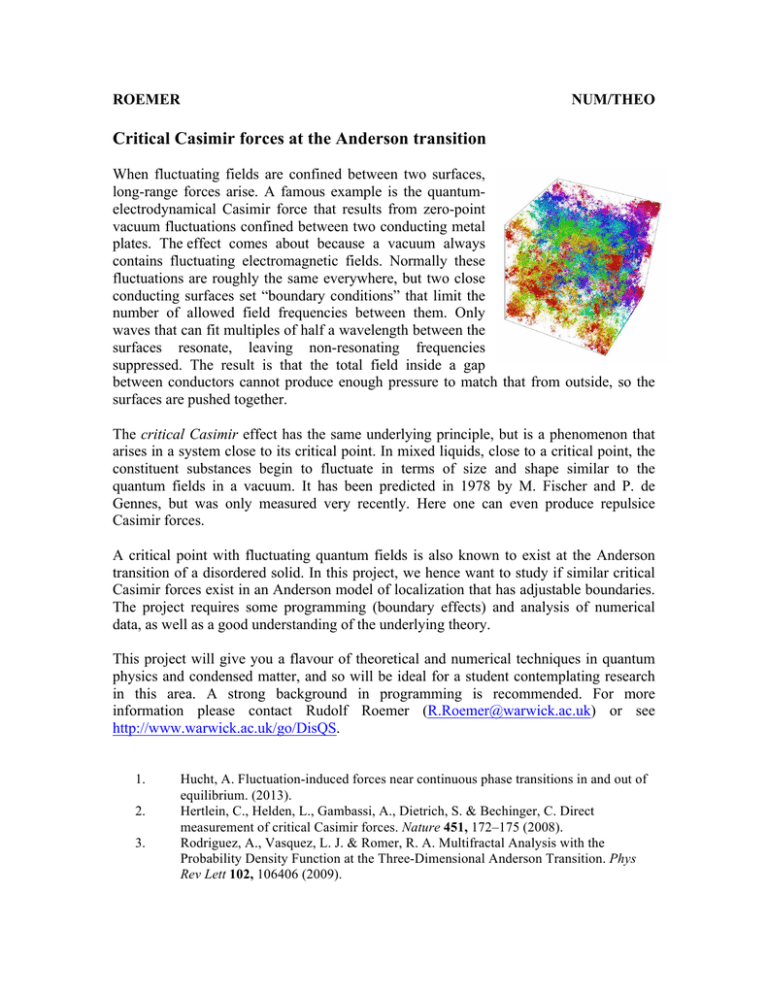
ROEMER NUM/THEO Critical Casimir forces at the Anderson transition When fluctuating fields are confined between two surfaces, long-range forces arise. A famous example is the quantumelectrodynamical Casimir force that results from zero-point vacuum fluctuations confined between two conducting metal plates. The effect comes about because a vacuum always contains fluctuating electromagnetic fields. Normally these fluctuations are roughly the same everywhere, but two close conducting surfaces set “boundary conditions” that limit the number of allowed field frequencies between them. Only waves that can fit multiples of half a wavelength between the surfaces resonate, leaving non-resonating frequencies suppressed. The result is that the total field inside a gap between conductors cannot produce enough pressure to match that from outside, so the surfaces are pushed together. The critical Casimir effect has the same underlying principle, but is a phenomenon that arises in a system close to its critical point. In mixed liquids, close to a critical point, the constituent substances begin to fluctuate in terms of size and shape similar to the quantum fields in a vacuum. It has been predicted in 1978 by M. Fischer and P. de Gennes, but was only measured very recently. Here one can even produce repulsice Casimir forces. A critical point with fluctuating quantum fields is also known to exist at the Anderson transition of a disordered solid. In this project, we hence want to study if similar critical Casimir forces exist in an Anderson model of localization that has adjustable boundaries. The project requires some programming (boundary effects) and analysis of numerical data, as well as a good understanding of the underlying theory. This project will give you a flavour of theoretical and numerical techniques in quantum physics and condensed matter, and so will be ideal for a student contemplating research in this area. A strong background in programming is recommended. For more information please contact Rudolf Roemer (R.Roemer@warwick.ac.uk) or see http://www.warwick.ac.uk/go/DisQS. 1. 2. 3. Hucht, A. Fluctuation-induced forces near continuous phase transitions in and out of equilibrium. (2013). Hertlein, C., Helden, L., Gambassi, A., Dietrich, S. & Bechinger, C. Direct measurement of critical Casimir forces. Nature 451, 172–175 (2008). Rodriguez, A., Vasquez, L. J. & Romer, R. A. Multifractal Analysis with the Probability Density Function at the Three-Dimensional Anderson Transition. Phys Rev Lett 102, 106406 (2009).
